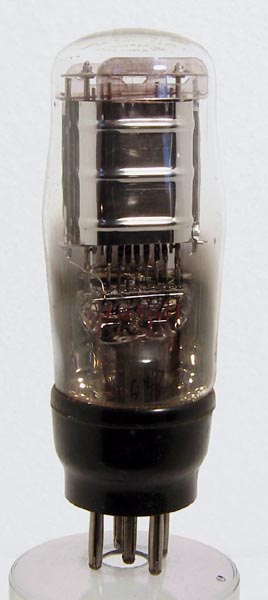|
Pen231Sensibly equivalent¶ to:
|
|
|

|
The Pen231 audio output valve was manufactured in the 1930s. It was for broadcast receivers driven by accumulators for LT and dry batteries for HT supplies.The Pen231 (1936) typifies the swansong of the 2V 'household' battery radio before it was displaced by mains radios as the National Grid reached completion or was superseded by true portables of the 'all-dry' type.Unusually for a 2V battery output valve, the Pen231 was designed for automatic grid bias provided by a resistor in series with the negative side of the (120 V) HT battery. This did away with the need for the once-ubiquitous 9V grid bias battery and, more importantly, it automatically adjusted the bias as the HT battery faded as it ran down. Additionally, since regular HT battery replacement was a significant expense (10/6) (whereas the 2V accumulator would be recharged by the local garage for 6d. or less) the Pen 231 sacrifices filament efficiency by drawing 0.3A at 2V in exchange for improved HT current economy.For correct operation the anode load should be 19,000 Ohms.The classic envelope is 38 mm in diameter and, excluding the B5 base pins, is 99 mm tall.References: Data-sheet, 1040 & 1043. Type Pen231 was first introduced in 1936. See also 1936 adverts. |
Pin Connections
| 1 | 2 | 3 | 4 | 5 |  a | g1 | f(-) | f(+) | g2 |
|
|
Absolute Maximum Operating Conditions¶
| Vh | Ah | Va | Vs | Vg | mAa | mAs | ra | gm | Pout | D | 
| 2.0 | 0.3 | 120 | 120 | -2.5 | 5.0 | 1.0 | 0.5M | 3.6 | 0.37W | 14% |
|
Updated February 20, 2013.
|
|